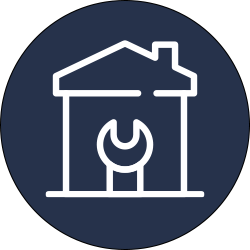Wild Hog Removal
Do you need to get rid of wild hogs? We can help!

Wild Hog Removal Strategies
Trutech’s team is made up of specialists who know exactly how to handle wild hogs. We’ve used our decades of collective experience to develop effective methods of hog capture and hog removal that minimize risk and injury to all humans and animals involved. Our licensed specialists will work diligently to grant you the peace of mind you deserve in a way that is also safe and provides a long-lasting solution.
Here at Trutech, we care about the environment and the animals who call it home. That’s why all of our methods are ethically-sound and have minimal impact on the environment. When you call Trutech, you know that you’re in the best hands. We guarantee your satisfaction.
Wild Hog Problem

Signs a Wild Hog is on Your Property
Feral pigs, or wild hogs, can do a lot of damage to a person’s property. They’ll eat practically anything that presents itself and can thrive in most any environment, which can become a problem when wild hogs decide to settle on your property. Hogs have a habit of rooting through yards in pursuit of food, and this search can quickly become destructive and completely decimate a lawn. If food isn’t disposed of properly or there’s a garden nearby, wild hogs may be attracted to the area. These pigs aren’t easy to get rid of either. They’re strong, fast, and resilient, and once they’ve settled in an area, deterring them is incredibly difficult. Trapping is the best solution, but this is a dangerous undertaking if you’re not a professional.

Dangers of Wild Hog Infestation
Wild hogs are estimated to cause 1.5 billion dollars in damages annually through their destructive eating habits, the spread of disease, and harm to livestock. The pests disrupt natural nutrient cycles in soil and increase bacterial contamination in waterways through rooting, wallowing, and trampling. Common diseases transmitted to humans by feral hogs include swine brucellosis and tularemia.
Humane Wild Hog Removal & Control Strategies

Entry into property
Wooded properties are especially attractive to these pests, as they often provide shelter, nesting materials, food, and water. Picnics, outdoor gatherings, or grilling and cooking outside may draw them closer to homes. Likewise, unfenced yards are typically more susceptible to hogs.

Trapping & Removal
Attempts to control wild hogs with commercially available products are often costly and not very effective. Trapping is often the most affordable and efficient form of control. However, wild hogs can be exceptionally strong and cunning, making any interaction with them dangerous. Because of the risk of injury, removal of feral hogs is best left to the trained wildlife specialists at Trutech.

Prevention & Exclusion
In addition to being fast, strong, and large, wild hogs are very intelligent. They often find ways to get to food despite fences and other non-lethal exclusion techniques. As such, it is very difficult to keep the pests away once they have made residential properties part of their foraging area. To reduce the likelihood of attracting them into yards, avoid planting fruit- or nut-bearing trees and properly dispose of food. Outdoor chicken feed or pet food should also be brought indoors or stored in tightly sealed containers after use.
Frequently Asked Questions
Deterrents are very ineffective for hogs. Population reduction and trapping of the hogs is the best means for a solution to help rid you of this issue.
Attacks
Like most types of wildlife, these animals try to avoid people. However, because they can weigh well over 100 pounds and grow sharp tusks, wild hogs are dangerous to people in some cases. Attacks are rare, but the pests may charge at hunters or hikers if cornered or protecting their young.
Disease
In addition, wild hogs are dangerous due to the bacteria and viruses they carry. E. coli infection, brucellosis, and rabies can all transfer from feral pigs to humans or pets. Those who hunt and consume these animals are most at risk for wild hog diseases.
People can contract almost 30 different diseases from wild hogs. While most are treatable, they can cause long-term damage without medical intervention. The following are high-risk examples:
- Brucellosis – Inflicting flu-like symptoms, brucellosis is the most common wild hog disease. Most get it through contact with infected fluids or tissue. Eating undercooked meat is also a risk factor.
- Tularemia – This disease can spread through hog meat or the ticks and biting flies that feed on feral pigs. Tularemia may cause pain, coughing, breathing problems, and throat swelling.
- Leptospirosis – Wild hogs can spread this illness to those who come in contact with their urine or drink contaminated water. Possible symptoms include pain, fever, and nausea.


